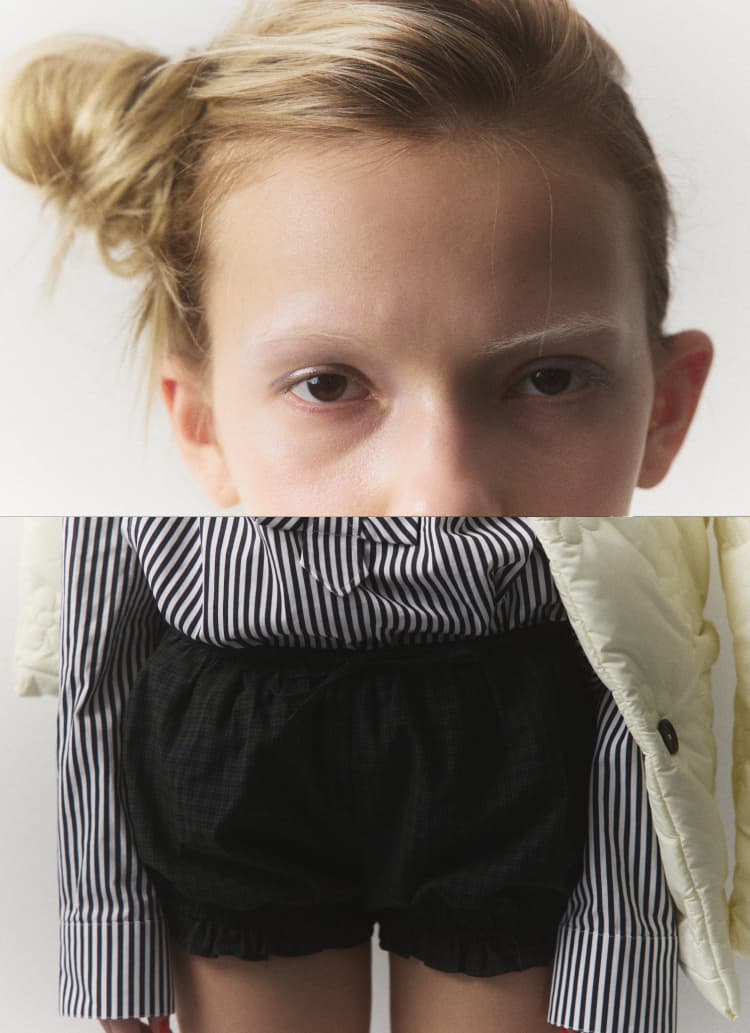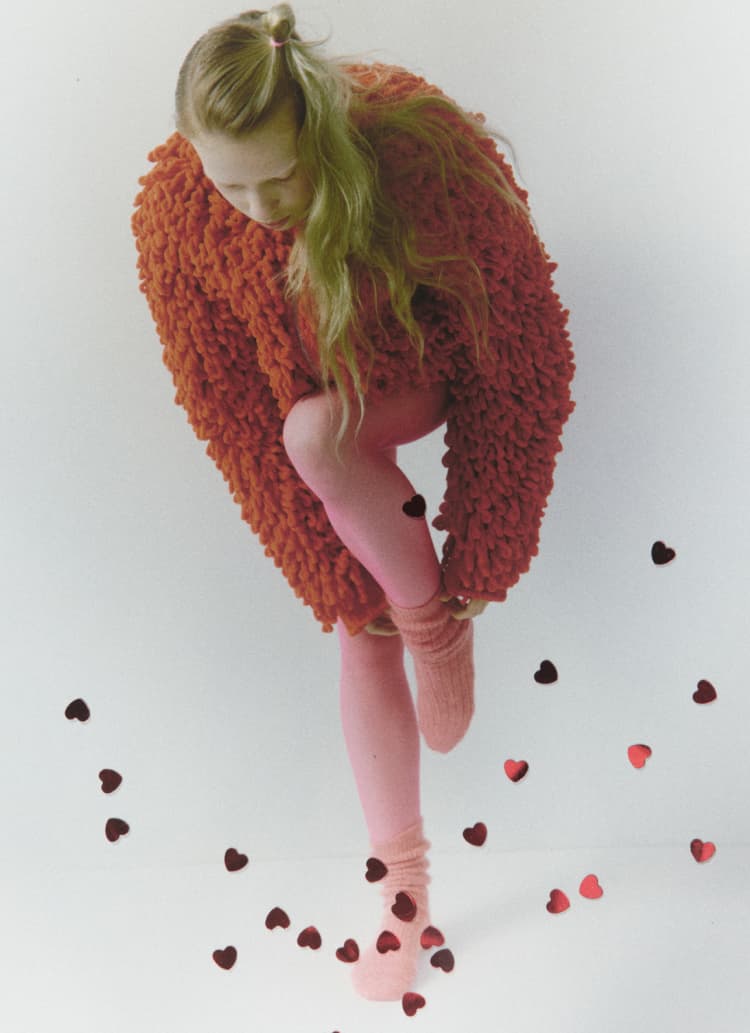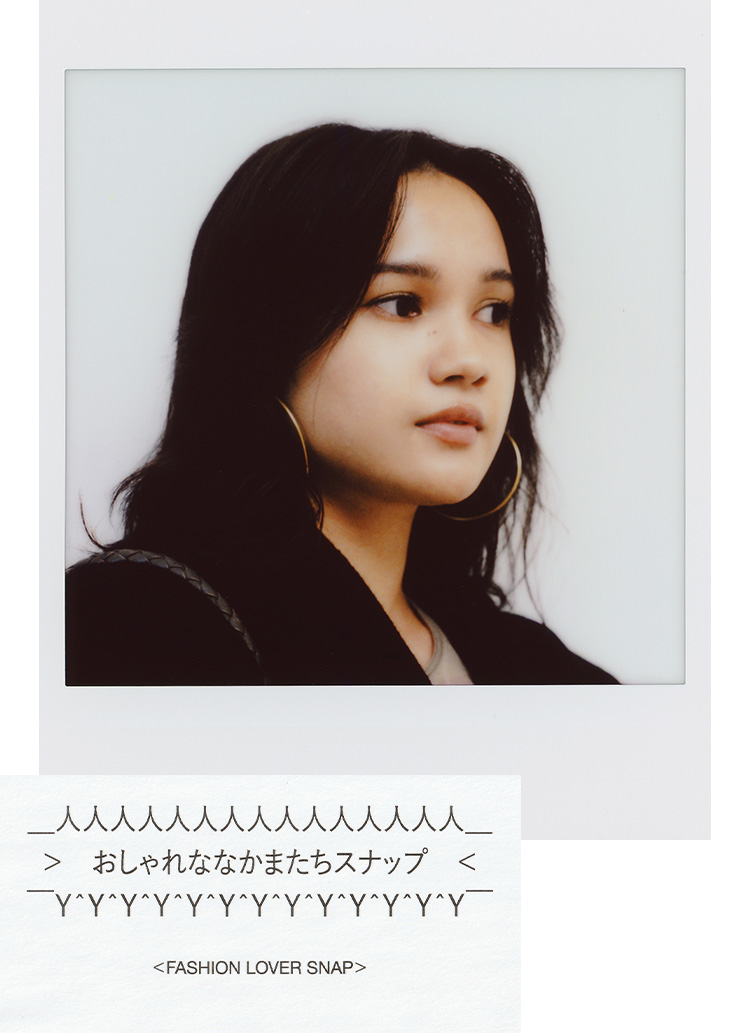

The Next Chapter of Vintage Denim.
The vintage god’s comparisons
between the world’s three largest denim brands.
Thanks for waiting, denim lovers all over the planet!
The legend of vintage denim, Yutaka Fujihara who is the director of BerBerJin,
will be lecturing us the second edition of “authentic denims that you can be showing off to vintage nuts.”
In the previous article, we introduced 501, denim jackets, and slightly touched upon 701
with the keywords of “high-waist, lightweight, and skinny”.
And, these styles were mostly produced by the American top three denim brands,
Levi’s®, Lee, and Wrangler during the 30s to the 60s.
Today, we will be scrutinizing the styles in depth, so let’s try inheriting his denim expertise!
Photo_Kazumasa Takeuchi(STUH)
For women who admired cowboys.
- — For both men and women, the trend of wearing a high waist denim is still prevalent in this summer. As we introduced 501 quite in depth in the last article, we’ll be specifically focusing on women’s models this time.
- As a premise, the brand which firstly ever produced women’s jeans is Levi’s®. As you may know, the first denim that Levi’s® generated was in the year 1873 and since then mostly male laborers were its main market. Thus, for example, there was a 503BXX in boy’s sizing but never in women’s at that time.
- — So, why is women’s model invented?
- After the Great Depression, ranchers in the West started “dude ranch” for wealthy people. Since then cowboy’s lifestyle began to fascinate people and denim was no longer clothing for laborers but for cool people. And, I guess Levi’s® tried to differentiate styles between men and women then. Even before the birth of a 701, girls were wearing cowboy jeans in boy’s sizing. However, those girls were probably complaining the thickness of the men’s denim then, so that’s most likely why the thinner style was began to be produced for woemn haha. Eventually, in 1934, the first 501-like lightweight high-rise denim for women was manufactured.
- — So is that what we call a 701 today?
- Actually, when the model was initially introduced, there was no name for that, but people gradually started to call it a 701 around 1937. The silhouettes of 701s were slightly fluctuating until the mid-60s, but what hadn’t ever changed was “high-waist, lightweight, and skinny figures”. Those were the key terms that constructed the very fundamentals of a 701. Additionally, while a 501 is called “red line” because of its red selvage, a 701 is comprised of blue-red-blue line just like the Stars and Stripes which are the little differences in details of two.

- — So the selvages were even disparate?
- Exactly. That’s the characteristic of a 701 so-called a “No.2 Denim”. (701 is nicknamed No.2 Denim because of its thickness compared to the 501.) The one with the selvage was produced till 50s though.
- — Well, I feel 701s are so high-waisted compared to 501s.
- True. The 701 figure is like so today’s vibes. The waist is narrowed yet the hip is widening, a very female-like shape.
- — Are there color differences too between the 501s and No.2 Denims?
- 501s are more strong in indigo tints and the color fades roughly, but 701 is tidier in terms of color fade which is entirely beautiful still after washing or wearing. Yet, there isn’t much color differences between the very first 701s which were manufactured on the 30s and the ones generated in the 60s.
- — I see. Please then tell us about its model changes (restyling).
- The very first 701 from the 30s was comprised of back straps with a front button-fly. Many people often think a 701 always obtains a front zipper, but actually, the oldest models possessed a button-fly just like a 501. In addition, the hip figure is wide too.
- — How many of those very first 701 models have you obtained, Mr. Fujihara?
- About 5-6 pairs. Probably, 701s were produced much less than 501s, so they’re even hard to find them. Even with my connections, a person who owns the very first model is only Yukari Negishi, a director of Ron Herman. She must own a lot of extraordinary pairs for sure.
- — How much would a pair with the buckle cost?
- It really depends on a specific pair, but I’d say around ¥15,0000 (≈ $1,350 USD). Well, a pair of 501s in the same era will cost more than ¥1,000,000 though haha.
- — Really!? Then, what is the most invaluable model?
- I’ve only seen once in my life which was a 701 that was produced during World War II. The pair wasn’t consisted of arcuate stitches on back pockets, rivets on coin pockets, and black lacquer buttons in which the style was exclusively designed for World War. It’s super rare, but honestly, I don’t know if the model will be priced that crazy high though.
- — Are the leather patches the same between 701s and 501s?
- The 701 models after 1934 would come with white linen patches. Yet, the 501s at the same era of course came with the leather patches. Linen patches were also so sensitive thus so easily ripped just like the leather, so the model comes with the patch would be very valuable today!

<Levi’s®> “701XX Deadstock” Late 1950s Reference (BerBerJin 03-3401-4666)
- — I feel the patches are somehow different in their designs too…
- Right. While the 501 patches only present its waist and length, 701 indicates waist, length, and hip. The replicas from <LEVIS VINTAGE CLOTHING> also represented that detail too which is awesome.
- — I see! What are the other characteristics?
- After a while, the back straps were gone, and the front became a zipper from the buttons. 501s officially started to comprise a zipper from 1954 with the ZXX model. By the way, 701s incorporated it even before that though. Moreover, the famous red tab on the right back pocket only consisted of its logo on one side when started, but it became on both sides after 1953.
- — Marilyn Monroe was known for wearing a 701, but which year or model was she wearing?
- They were the 50s. As a 701 is also called the “Monroe model”, the figure around hip gradually became bigger and bigger as it followed her boom. I could also tell that was trendy then when I was watching movies from the 50s where every lady was wearing a denim that emphasized the sizes of their butt haha.


<Levi’s®> “701XX Deadstock” Late 1950s Reference (BerBerJin 03-3401-4666)
- — What were the characteristics of 701 models in later stages?
- During the 60s, the linen patch became a tinier paper tag and the inner lining would be gone, and the entire shape became more hippie. I cannot define how long the productions of 701s lasted after that, but I guess the models were manufactured till the mid-60s by looking at the designs of those zippers. Around the time, Levi’s® started to produce white and the other colored pants for women which adversely made the denim market shrunk.

(Above) <Levi’s®> “701XX” 1960s. ¥59,800+TAX (FAKEα 03-3404-0168), <Levi’s®> “701XX” 1950s. Reference (BerBerJin 03-3401-4666)
- — This might a dumb question. As 701s were made for women, was there any guy who wore them?
- Yes, there was. In general, they were quite popular for summer since they were thin. Some male stuffs at FAKEα, one of BerBerJin’s branches, wear the old models with buckles today. I felt when a guy wears a just-size in this model, they would look like painter pants. Furthermore, the styles that were produced in later stages were as I mentioned large in butt, hence generally not the best fitted for men.
Lee is specialized in its coloring and rise.
- — Well then, as we went through entirely on Levi’s®, please tell us more about the other brands. How was Lee established?
- As Levi’s® founded its first denim on 1873, Lee generated its first workwear on 1910s and its denim business began on 1920s. When Levi’s® was focusing on workwear at the end of 1920s, Lee produced its first denim and named that “Lee COWBOY” with the logo on its button where Lee was incorporating so much of cowboy vibes into denims.
- — What were the main differences between Levi’s® and Lee?
- To be honest, the answer will be pretty complicated. While Levi’s® adopted a right-hand twill, the pattern on its surface seems going down on left, Lee used a left-hand twill, so its pattern goes down on right. (You will know what I mean when observing fabrics closely.) And, the color fades more with the right-hand twill, so the indigo on Levi’s® denims were faded heavier than Lee’s. Actually, Lee also adopted the right-hand twill during World War, so there were a few models that were similar in color-fades with Levi’s® pieces as well though.

(Above) <Lee> “Lady Lee RIDERS” 1950s ¥29,800+TAX, 1970s Deadstock ¥25,800 (BerBerJin 03-3401-4666)
- — Thanks for the great trivia! Please let us know about the women’s model as well.
- They were similar with the Levi’s® models where they’re lightweight, high-rise, and skinny. Most likely, the initial production was occurred during the 40s and the red tag with red stitches shown above in the image was produced by the mid-50s. Thereafter, the black tag with white and yellow stiches would be the mainstream in the end of the 50s. However, the black tag for women’s models were super rare that I haven’t even seen one physically.
- — When did the tag start to be written “Lady Lee Riders”?
- That is from the 60s. The rise became narrower, and they adopted the indigo colorway, but by using different fabrics, each item looked completely disparate which was Lee’s strength then.

(From Left) <Lee> “Lady Lee RIDERS” 1950s ¥29,800+TAX, 1970s Deadstock ¥25,800 (BerBerJin 03-3401-4666)
- — The lengths of the rise seem so different! How do you distinguish pairs that were generated after the 60s?
- Firstly, you can hardly tell differences by the figures. If the piece has the black name tag with “Lee®” logo on the right of the back pockets, then it is from the 60s. When the logo is bigger letter written as “Lee®MR”, then that was manufactured from the beginning of the 70s. Probably, since the western style was Lee’s main philosophy, most of the jeans were so long in inseams, especially for those vintage ones. It’s quite hard to find the right pair for you, but you should definitely enjoy the little journey to find the best piece for yourself!

(From Right) <Lee> “Lady Lee RIDERS” 1950s ¥29,800+TAX, 1960s ¥15,800+TAX, 1970s Deadstock ¥25,800 (BerBerJin 03-3401-4666)


<Lee> “Lady Lee RIDERS” 1950s ¥29,800+TAX (BerBerJin 03-3401-4666)
Wrangler, the one which paid extra attentions on women’s market.
- — So finally, Wrangler!
- The brand was found on 1947, right after the end of the war. And, the first women’s model was generated in the 60s which was pretty late in terms of trends then, but Wrangler paid an extra attention on women’s market compared to the other two. In the 60s, the firm released colored jeans which was a step ahead of the other brands and the booms. Additionally, Wrangler generally adopted double stitches without inner linings just like a classic 11MWZ, Wrangler’s well-known men’s model. Actually, there was a model that adopted inner linings in 1964, yet I’d say that was an exception. And, the back pockets were stitched with the famous “W” logo, and the plastic tag was attached above on the right side.

<Wrangler> “Slim Cut Jeans” End of the 1960s Deadstock ¥9,800+TAX (BerBerJin 03-3401-4666)
- — How can we distinguish the eras?
- The pairs from the 50s were comprised of the embroidery tag on the back side of the front zipper, but I’ve never seen the women’s piece with that. Since the 60s, the tag became a print and the models with the blue-bell symbol were began to be manufactured in the beginning of the 60s and the styles without the blue-bell in the late 60s.

(From Right) <Wrangler> “Slim Cut Jeans” Early 1960s ¥15,800+TAX, Late 1960s Deadstock ¥9,800+TAX (BerBerJin 03-3401-4666)
- — Are there unique characteristics on its designs and shapes?
- Wrangler denims were consisted of relatively tiny pockets. Otherwise, most of the characters were similar to the other two brands in which they were high-rise with a wide hip, and getting skinny to the bottom. Until the boom of flare denims in the 70s, most of the models were almost the same in their figures. Beside these three largest firms, a store brand like JCPenny also produced the similar silhouettes.



<Wrangler> “Slim Cut Jeans” Early 1960s ¥15,800+TAX (BerBerJin 03-3401-4666)
- — Wrangler is relatively affordable, so I think it could a good place to start with.
- For sure, and there is even an affiliated brand called MAVERICK which generated corduroy pants with the same figure of its denim. If you already own a few pairs of vintage denims, this could be a distinctive choice to start with too.

< MAVERICK > “Slim Cut Jeans” 1970s Deadstock ¥9,800+TAX (BerBerJin 03-3401-4666)
Comparisons between the three brands worn by a BerBerJin staff, Ms. Yamanaka.

<Wrangler> “Slim Cut Jeans” Early 1960s ¥15,800+TAX (BerBerJin 03-3401-4666)

<Lee> “LADY Lee RIDERS” 1960s ¥15,800+TAX (BerBerJin 03-3401-4666)

<Levi’s®> “701XX” 1960s Reference (BerBerJin 03-3401-4666)
(From Right) <Levi’s®> “701XX” 1960s Reference (BerBerJin 03-3401-4666), <Lee> “LADY Lee RIDERS” 1960s ¥15,800+TAX (BerBerJin 03-3401-4666), <Wrangler> “Slim Cut Jeans” Early 1960s ¥15,800+TAX (BerBerJin 03-3401-4666)
- — Beside the Wrangler denim might not be the best size for her, all the figures seem very similar.
- That’s right. Everyone should try a pair on before purchasing one since they are so hard to tell if they would fit you. Also, everyone has different color preferences as well so.
SHOP INFORMATION
BerBerJin
Harajuku SH Building, 3-26-11, Jingu-mae, Shibuya-ku, Tokyo
Weekdays 12:00~20:00
Sat, Sun, Holi 11:00~20:00
03-3401-4666
PROFILE
Yutaka Fujihara
The legendary director at “BerBerJin”, one of the most renowned vintage clothing shops in Japan. His directed book “THE 501XX®-A COLLECTION OF VINTAGE JEANS” where he introduced everything he knows about vintage denims was once sold out, but currently available again with the second edition. There’s a rumor that he’s gonna start a new project next year too… He is well-known by vintage nuts all over the world, and he also started a YouTube channel which introduces and analyze vintage denims, so check it out! YouTube channel




